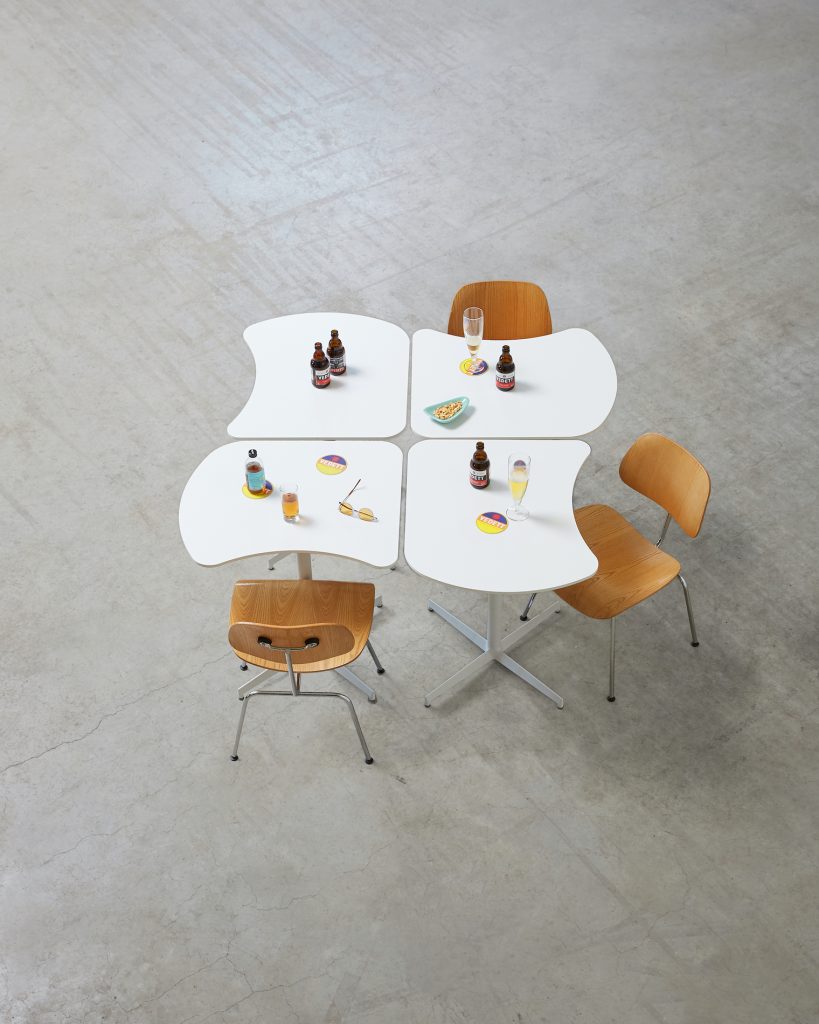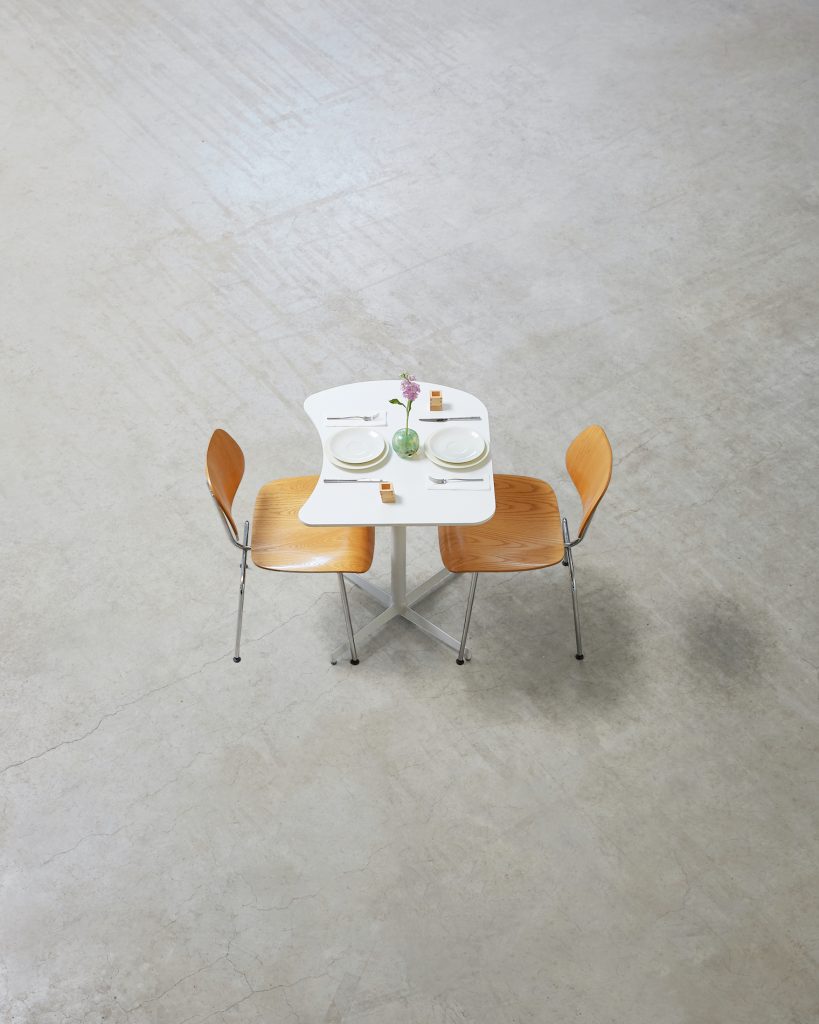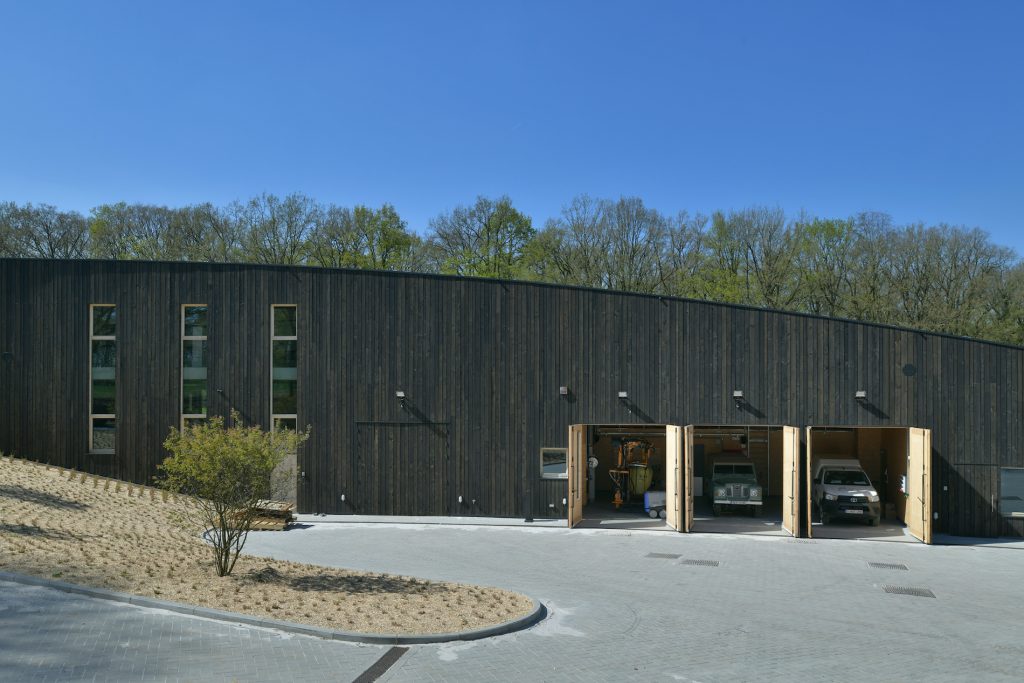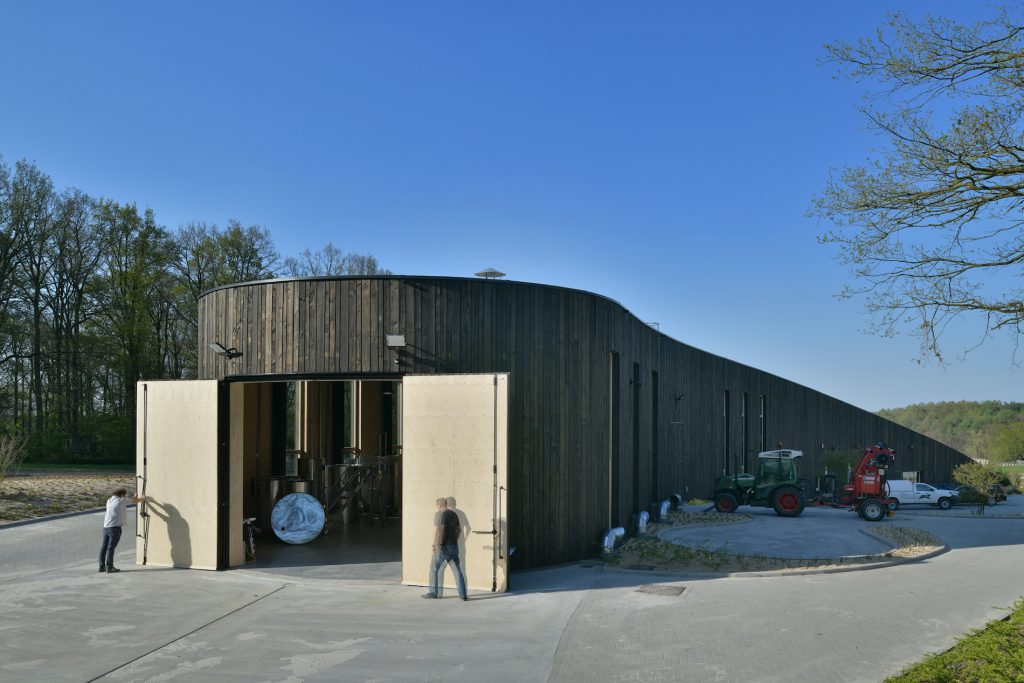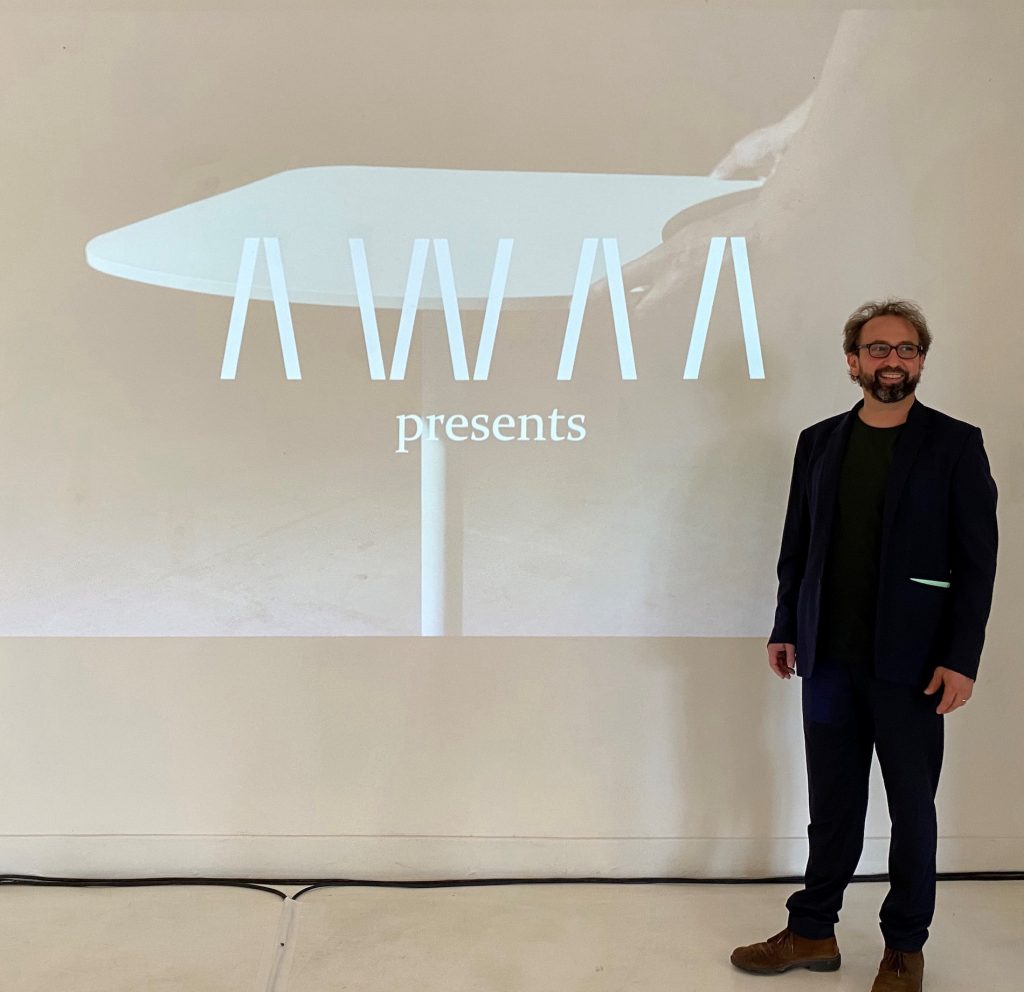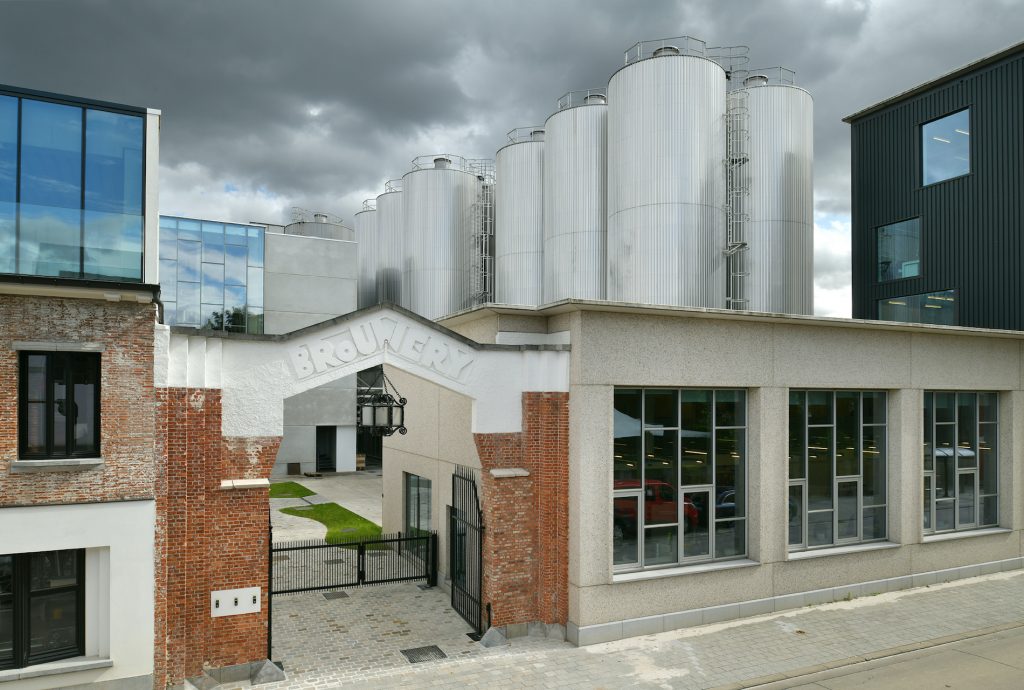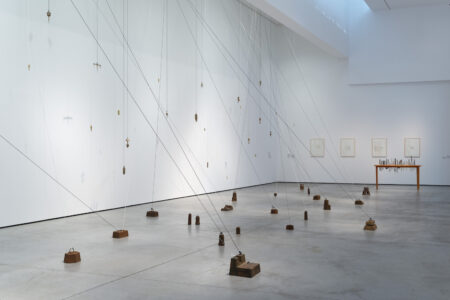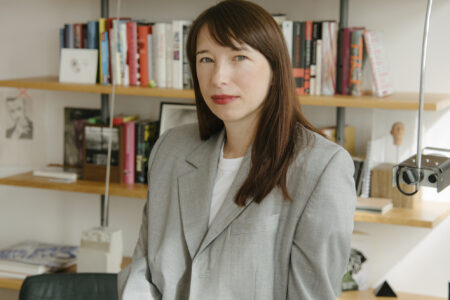Charly Wittock: From Architecture to Furniture
Founder of architectural agency AWAA, Charly Wittock’s spoke to TLmag about the current, future society and return to the origins of man and his know-how.
Inventor of the C-19 table and founder of architectural agency AWAA, Charly Wittock’s projects cross boundaries and question the idea of social relationships. Anchored in the spirit of the times, the modular and hybrid table aims to promote both distance and closeness. In our exchange, we discussed some themes around the major issues of our current and future society, while observing a return to the origins of man and his know-how.
TLmag: The name of this table automatically attracts attention. But its reality goes beyond the context of the pandemic.
Charly Wittock (C.W.): This table is first and foremost the fruit of a comprehensive reflection. It is part of a project that we began before confinement and then had to temporarily stop, like all of our other projects. The idea was to create a new building for the workers of the Duvel brewery: a convivial space with a cafeteria and a shower area, in particular. The break gave us the opportunity to reflect on the evolution of the architecture. This table, which is the result of our reflection, can either promote conviviality that fits the concept of “social spaces” for Duvel or if we change the configuration, a certain distance.
TLmag: Your table has a playful side. Is that true of all “good design”, in your opinion?
C.W.: To me, it is above all the sensual expression of a questioning of the concept of proximity. While this table is the result of our reflection on architecture in times of confinement, it is also part of many other themes specific to our time and to the notion of living together.
TLmag: For people in creative fields, the confinement has been a source of much questioning. What do you think we need to take away from this crisis?
C.W.: Periods of crisis push us to review how we live and work. They force us to step out of our comfort zone to explore other paths. In an unprecedented context, you are forced to try new recipes, instead of following those that are proven. Often the result is positive and brings new creative energy. This is the case today.
TLmag: You are an architect before being a designer. For you, must the creator 2.0 have this type of hybrid profile?
C.W.: This hybrid profile you mention is strongly tied to the way our agency works. Our specialisation is in flexibility and listening. Our clients call on us as much for projects involving engineering, as for object design or building logistics. We are living in a world that, bit by bit, is freeing itself from this idea of specialisation. While we certainly need specialists, we must also return to seeing things from a broader perspective. This is why we need generalist, and thus hybrid, profiles. By combining these two approaches, we will be able to put the human back in the centre of design. The best designers are those who show curiosity and openness.
TLmag: You are active internationally. Do you think this crisis is going to narrow our field of action?
C.W.: We ask ourselves this every day. For those of us who are involved in many projects abroad, the confinement has been a time of reflecting on our way of travelling. For the past decade, we have fortunately had access to technological tools that enable us to limit travel, but this doesn’t solve everything. We are still convinced of the added value we bring to international projects. The idea is not to innovate for the sake of innovation. We are interested in bringing our fresh perspective where it is needed, and putting our vision at the service of local manufacturing methods.
TLmag: Tell us about these projects.
C.W.: We are working on two projects in Italy. The first is in Sicily, in an agricultural area with strongly restrictions on urban development. The project is for a new home that blends into the nature and the landscape. It is built in local dry stone, using traditional techniques for agricultural buildings, to create spaces that meet our modern lifestyle. We are also transforming a conference centre and old hamlet that are part of a 14th-century fortress in the north of Italy, near Trieste, into a B&B with 16 units. For the second project, we propose modern building techniques to celebrate seven centuries of architecture.
TLmag: Do you feel that travelling less makes us see our own country differently?
C.W.: I am convinced that we will progressively limit trips that don’t make sense. Already in 1996, when I was working for my Master’s degree in Environmental Science, I carried out a research project on the impact of networking technologies on our profession. Personally, I certainly will not travel in the same way in the future. But this issue isn’t black and white. What is important, is acting with intelligence and moderation.
TLmag: Especially as sometimes this multi-culturalism pops up where you weren’t expecting.
C.W.: We have had the opportunity to collaborate, here in Belgium, with Japanese architect Terunobu Fujimori. We are translating his project as faithfully as possible, to not betray the Japanese tradition while respecting Belgian habitability standards. In this case, while serenely remaining in Belgium, we have been able to design and exchange as if we were building abroad. There isn’t just a reversal of roles, but also a geographic reversal that enables us to explore new paths. All while maintaining a nearly zero carbon footprint.
TLmag: Some projects are universal, like your table. How do you foresee its international development?
C.W.: It has a simple shape, without a marked style. It can be produced in a multitude of materials and adapts to all types of usage. It was born in Belgium for a local project, but during a global pandemic. We are fortunate to have an editor based in New York, but who is originally Belgian, handling production and distribution in North America and Europe. We hope she will be able to travel around the world and continue to interact with users, while respecting the rules social distancing. Once the health crisis has passed, these same tables can be used to enable a more intimate and universal proximity.
TLmag: What is your perspective on Belgian design?
C.W.: What is happening today in this country is fascinating. I left Belgium when I was 17 years old, and returned when I was 30. During that time, Belgium became an open-minded country. As the capital of Europe, Brussels has benefitted from a real creative momentum. Not only in the domains of architecture and design, but also in fashion and the culinary arts, for example. The richness of projects that can be seen today in Belgium is proof.
TLmag: Which creators do you follow closely?
C.W.: We can talk about creators, there are certainly many, but also of craftspeople. For the wooden winery facility we designed for the château de Bousval, we worked with Axel Ketele (Timberframing). This carpenter with exceptional know-how and passion gave an added dimension to the project. We could also mention Zaventem Ateliers, the project of Lionel Jadot (ed. note: a former paper mill converted into artisan workshops) or even the work of the chefs who reconnect us with simple yet beautifully cooked dishes. This is the case of Richard Schaffer, the chef of restaurant Le 203 in Brussels.
TLmag: What do you think explains the renewed interest in know-how that we have been able to see over the past several years?
C.W.: I think we need to speak rather about a return to our origins. In terms of ecology in architecture, we have reached the limits of what is technically possible to, for example, reduce our consumption of water or electricity. So, we need to ask ourselves what, in our opinion, best translates the concept of comfort, and then transpose it concretely in the domain of cooking or design. Understanding the current challenges: it’s all there!
